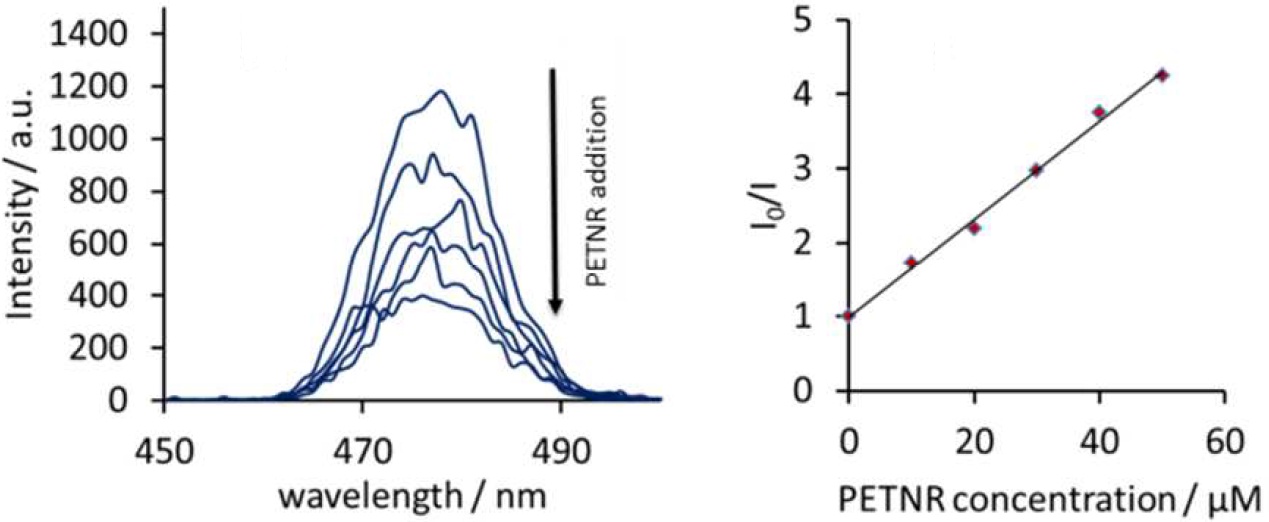How do you combine rare-earth metals, extremely specific energy transfers, and luminescent properties to investigate changes in enzymes? New methods often arise from unique confluences of existing knowledge. In their recent paper, the Natrajan group from the University of Manchester exploit known properties of easily-obtained chemical products to present a clever new biosensory technique .

The unique aspect is the use of upconverting phosphors (UCPs) in combination with enzymes. UCPs are luminescent particles, often based on rare-earth metals, which can be excited by multiple photons absorbed in the near-infra-red region (750-1400 nm wavelengths). Post excitation, they emit a photon of light in the higher-energy visible spectrum, thus the energetic process is known as up-conversion. While enzymes have high specificities and sensitivities to substrates, UCP’s have the advantage of excitation in the near-infra-red region without autofluorescence. In combination, enzymes and UCPs provide several direct advantages over simple biosensory fluorescence measurements.
In the current paper, NaYF4:Yb:Tm was the UCP used to probe the redox properties of the enzyme pentaerythritol tetranitrate reductase (PETNR) and Forster Resonance Energy Transfer (FRET), involving energy transfer between two chromophores, was used to excite the UCP. In this case, transfer of energy from the absorbance band of the flavin mononucleotide core of the PETNR enzyme and the emission band of the UCP, which are very close in wavelength, allow FRET to occur. Since a second emission band in the near-IR region originates from this UCP, this was normalized so that the other band, varying with the enzyme concentration, could be measured against it. When the PETNR underwent a two-electron reduction, it negated its ability to undergo FRET, resulting in the loss of the emission band at 460 nm, rendering the solution colourless. The researchers demonstrated that this new technique can be used with either the full PETNR enzyme or the mononucleotide flavin core alone, indicating that this can be applied to a wider range of systems.
Find out more and download the article now:
Ratiometric detection of enzyme turnover and flavin reduction using rare-earth upconverting phosphors
Dalton Trans., 2014, DOI: 10.1039/C4DT00356J
 |
Ian Mallov is currently a Ph.D. student in Professor Doug Stephan’s group at the University of Toronto. His research is focused on synthesizing new Lewis-acidic compounds active in Frustrated Lewis Pair chemistry. He grew up in Truro, Nova Scotia and graduated from Dalhousie University and the University of Ottawa, and worked in chemical analysis in industry for three years before returning to grad school. |










